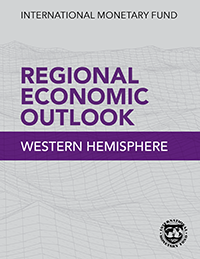This web page provides information in on the activities of the Office, views of the IMF staff, and the relations between Jamaica and the IMF. Additional information can be found on Jamaica and IMF country page, including official IMF reports and Executive Board documents that deal with Jamaica.
At a Glance
- Current IMF membership: 190 countries
- Jamaica joined the Fund in February 21, 1963; Article VIII
- Total Quotas: SDR 382.90 Million
- Loans outstanding: Stand-By Arrangements SDR 480.19 Million
- Last Article IV Consultation: April 10, 2018
Office Activities
-
PODCAST: Unpacking Jamaica’s Currency Depreciation
In this podcast, IMF economist Uma Ramakrishnan, says the central bank’s renewed commitment to its flexible exchange rate regime will help stabilize prices and spark growth.
September 12, 2018
-
IMF statement on recent media reports concerning Barbados’ Financial Supervision
The IMF has a longstanding commitment to the Caribbean region. We provide support to country authorities’ efforts to strengthen financial sector regulation and supervision, including through the Caribbean Regional Technical Assistance Center. The IMF does not, however, make assessments of the financial position of individual firms nor entities. We would refer specific questions to the Barbados Financial Services Commission, which has recently issued a comprehensive statement.
December 20, 2017
-
Jamaica—Putting the New Precautionary SBA in Perspective
Presentation by Constant Lonkeng Ngouana, IMF Resident Representative for Jamaica; Rotary Club Luncheon, Kingston
December 8, 2016
-
IMF clarity on Jamaica's forex policy
The Gleaner: Op-Ed by Constant Lonkeng Ngouana, IMF Resident Representative in Jamaica, and Uma Ramakrishnan, IMF Mission Chief for Jamaica.
November 22, 2016
-
What does the new precautionary stand-by arrangement mean for the Jamaican people?
The Observer : Article by Constant Lonkeng Ngouana, IMF Resident Representative in Jamaica
November 13, 2016
IMF’s Work on Jamaica
-
July 22, 2024
The President of the IDB and the Managing Director of the IMF Outline Enhanced Partnership to Better Support Latin American and Caribbean Countries
-
June 28, 2024
The IMF team and the Jamaican authorities reached a staff-level agreement on the completion of the third reviews of Jamaica’s Precautionary and Liquidity Line (PLL) and the Resilience and Sustainability Facility (RSF). The IMF’s Executive Board is expected to consider these reviews in August.
-
April 17, 2024
The Government of Jamaica (GOJ), the Development Bank of Jamaica, the Green Climate Fund (GCF), Inter-American Development Bank (IDB), the World Bank Group, European Investment Bank as part of Team Europe, USAID, and the United Kingdom, are discussing a framework to establish a ‘Blue Green Facility’ –a blended financing structure–of up to USD 500 million over five years, which would include a contribution from the Government of Jamaica. Such a programmatic approach will help catalyze climate finance by introducing systematic, coherent, and scalable approaches towards adaptation and mitigation needs.
-
March 8, 2024
Series:Country Report No. 2024/069
-
February 28, 2024
The Executive Board of the International Monetary Fund (IMF) concluded the Article IV lie Second Reviews Under the Precautionary and Liquidity Line and Under the Resilience and Sustainability Facility Arrangements with Jamaica.
Regional Economic Outlook

Western Hemisphere
Regional Economic Outlook
October 2022Recent developments in the Western Hemisphere—that is, the United States/Canada and Latin America and the Caribbean (LAC)—have been dominated by the impact of two distinct global shocks: the COVID-19 pandemic and then the Russian invasion of Ukraine. A third shock—the tightening of financial conditions—is now shaping the outlook. After contracting sharply in 2020, most of the Western Hemisphere’ economies recovered strongly in 2021 and early 2022, helped by the global recovery, the normalization of service sectors, and booming commodity prices. However, inflation pressures built up with pandemic-related disruptions, expansionary policies, rebounding demand, and the impact of the war in Ukraine on energy and food prices. The swift response of LAC’s monetary authorities to rising inflation—well ahead of other economies—helped contain price pressures and keep long-term inflation expectations anchored, but inflation remains high. Amid global monetary and financial tightening, and the ensuing slowdown in global growth and softening of commodity prices, activity is expected to decelerate throughout the Western Hemisphere in late 2022 and 2023, while inflation pressures are expected to recede gradually. Downside risks dominate the outlook and stem from tighter financial conditions, a more pronounced global slowdown, and entrenched inflation. For LAC, a sharp fall in commodity prices and social unrest are important risks. With inflation yet to abate and most economies still operating at or near potential, monetary policy should avoid easing prematurely and must stay the course. Clear communication of policy intentions will be key to reducing uncertainty and keeping inflation expectations anchored. Fiscal support deployed to mitigate the impact of inflation on the most vulnerable should be accompanied by compensating measures, where fiscal space does not exist, but also support monetary authorities’ efforts to tame inflation. Given rising financing costs, strengthening fiscal frameworks and advancing with inclusive fiscal consolidation—that protects key social objectives—will be essential to credibly putting public debt on a firm downward path while ensuring social stability. Boosting LAC’s medium-term growth requires raising productivity and good-quality public and private investment. Supply-side policies should focus on strengthening human capital, simplifying and modernizing labor regulations, and lifting barriers to firm entry and exit.
Read more: Regional Economic Outlook for the Western Hemisphere, October 2022



